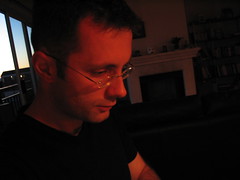
Click photo to see slideshow
or here for all Goa pictures
Tell me one thing: when you go for a vacation in a resort or village by the seaside do you feel that you are missing something if you stay in a place that is located more than two steps away from the beach? Do you feel deprived of an essential experience if you can’t see green waves breaking into white froth or calm ripples caressing the golden sand from the window of your room? Well, apparently a lot of people feel like that. How else can I explain the mile-long spread of straw-huts tucked between the sandy strip and the first palm trees that mark the outline of Palolem beach in Goa?
The reality is less idyllic – with few exceptions these huts are not really directly facing the beach but behind one of the many seafront restaurants; they usually come in pairs: no beach bar without its allotment of huts in the back. This way the tourists are caught in a double trap: as soon as they get out of bed they start spending money for breakfast. Before bedtime, one more drink… We looked at the huts as well; I hate to have sand in my bedroom but I was willing to try this sort of accommodation for the sake of being able to say “I stayed on the beach in Goa.” Sadly all the huts we saw had one thing in common – they looked cheap and unwelcoming; they were absolute trash. The buildings were on three-foot-tall stilts; they were all made of thin plywood or wood-fiber netting; most had no real windows just blinds. Each step taken inside was making the whole scaffolding shake; some floors even had weak spots that gave way under your foot, disasters waiting to happen. The interior varied in size but the same simple square layout was repeated ad infinitum – a bed covered by a mosquito net, a ceiling fan and sometimes a night stand. The more fortunate had a second, smaller room in the back that served as bathroom; the plumbing looked fragile, and in more than one case it consisted of an open tube that drained on the sand below the hut.
I can’t imagine how those monstrosities could incite anyone to stay inside one second more than they had to. Some of them were not without a certain charm though – there were wicker chairs outside by the doors, a hammock here and there, colorful canvas awnings hanging above the porches. The prices were shameless – anywhere from 300 Rs (about $8) to 1000 Rs ($26) per night. With some bargaining you could get a hut with a shared “bathroom” (located in a different shack) for 250 Rs. I didn’t really see any significant differences between the higher and lower end of the price spectrum – the rooms looked all similar, they only varied in size. There was only one such hut-village that had the privilege of being called “upscale” – the sturdy, good-looking cabins were made of wood and brick and had real windows; there were grass lawns in front of them and the sandy alleys were paved with stone slates. They were charging 3500 Rs a night and were booked solid, so we couldn’t even see one on the inside. I still can’t see the fascination of going to a hippie beach camp in India only to pay the equivalent of $100 a night…
Since there was nothing acceptable between the two extremes, our fleeting dream of staying on the beach evaporated during the half-hour I spent looking at over a dozen “hotels”. We walked back to the main street and got a room on the upper floor of a two-storey building hidden between the palm trees. For 400 Rs we had a quiet, large room with cable TV, a bathroom with tiled floor and walls (a rarity in India where crude concrete masonry is the norm) and - almost unheard of - hot water at the shower! The beach huts were forgotten on the spot. And I don’t like roasting in the sun anyway...
Posted from Varanasi, home to a large community of dread-locked westerners in search for the ultimate spirituality.







